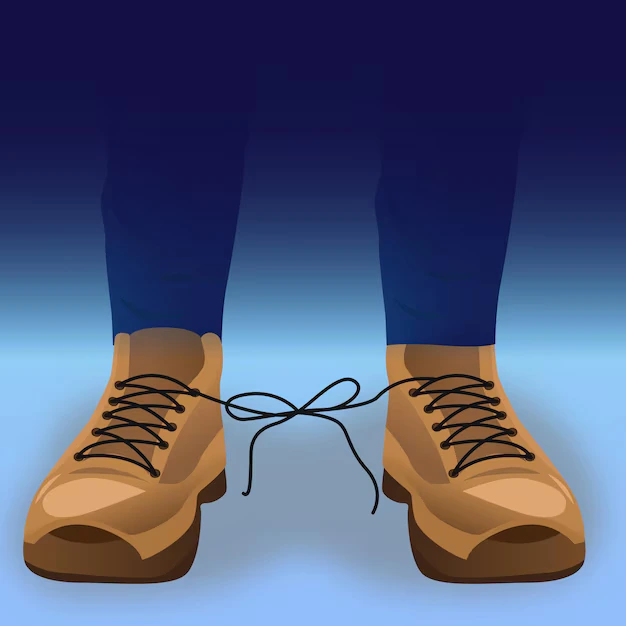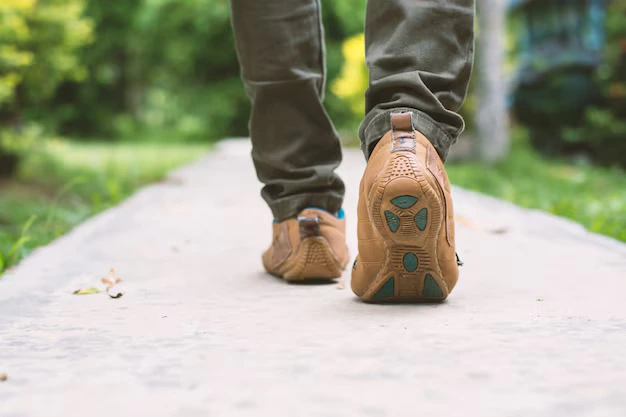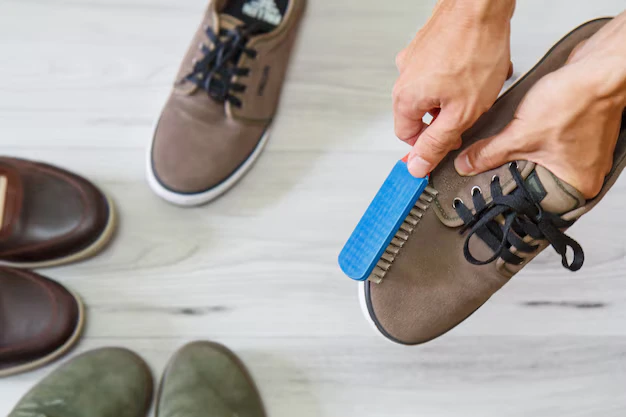Barefoot shoes are a type of minimalist footwear designed to mimic the natural shape and movement of the foot. With their thin soles and flexible structure, they promote healthier foot function by allowing for a more natural walking and running experience. These shoes have gained popularity for their ability to strengthen foot muscles, improve posture, and reduce the risk of injury. Whether you’re transitioning for health reasons or simply seeking a more comfortable option, barefoot shoes offer a unique and beneficial alternative to traditional footwear.
The science behind barefoot walking
The science behind barefoot walking involves several physiological and biomechanical processes that benefit the body:
- Natural Foot Mechanics: Barefoot walking allows the foot to move naturally, encouraging proper alignment and function. It enables the foot to flex, bend, and spread, improving overall foot health.
- Strengthening Foot Muscles: Walking without shoes activates the intrinsic muscles of the foot, which are often underused when wearing cushioned footwear. This helps improve muscle strength, flexibility, and stability.
- Improved Balance and Posture: Barefoot walking enhances proprioception, the body’s ability to sense its position in space. This leads to better balance, posture, and coordination as your feet have direct contact with the ground.
- Stimulating the Arch: Barefoot walking engages the arch of the foot, promoting its natural development. This can help reduce the risk of flat feet or other structural foot issues.
- Absorption of Shock: Without the cushion of traditional shoes, the body naturally adapts to absorb shock through natural movements and correct gait patterns. This helps reduce the impact on joints, particularly the knees and hips.
- Activation of Reflexology Points: Barefoot walking stimulates pressure points on the feet that correspond to various organs and systems in the body, promoting relaxation and potentially offering health benefits through reflexology.
What Are Barefoot Shoes?
Barefoot shoes are minimalist footwear designed to replicate the natural feel of walking barefoot while still providing protection from rough surfaces. They have thin, flexible soles that allow the foot to move naturally without restricting its motion. Unlike traditional shoes, barefoot shoes don’t have raised heels, arch support, or cushioning, which helps the foot’s muscles, tendons, and ligaments work as they are meant to. The goal is to encourage natural foot function and improve overall foot health.
Benefits of Wearing Barefoot Shoes:
Benefits of wearing barefoot shoes is countless. Some of them are :

- Improved Foot Strength: Barefoot shoes activate the muscles in the feet that are often underused in conventional shoes. Over time, this helps strengthen the foot’s intrinsic muscles, improving overall foot strength.
- Better Balance and Stability: With more direct contact with the ground, barefoot shoes improve proprioception (your body’s ability to sense its position in space), leading to better balance and stability.
- Enhanced Posture: Barefoot shoes promote a more natural alignment of your body, encouraging proper posture by engaging the muscles in your feet and legs. This can help reduce the risk of poor posture-related issues like back pain.
- Increased Flexibility: The flexible soles of barefoot shoes allow the foot to bend and move naturally, improving flexibility. This helps maintain or even improve the range of motion in the joints of the feet and ankles.
- Reduced Risk of Injury: By promoting a more natural walking and running gait, barefoot shoes help reduce the impact on the joints and prevent injuries commonly caused by improperly fitted shoes or unnatural movement patterns.
- Natural Foot Development: Barefoot shoes support the natural development of your feet. By allowing the toes to spread and move freely, they help prevent issues like bunions or hammertoes, which can develop from wearing restrictive footwear.
How to transition to barefoot shoes
Transitioning to barefoot shoes requires patience and gradual adjustment. Start by wearing them for short periods each day. This helps your feet acclimate without overwhelming them.
– Listen to your body as you increase wear time. If you experience discomfort, dial back a bit. Your muscles may need time to strengthen.
– Incorporate more natural movement into your routine. Walking on grass or sand can enhance the transition while engaging different muscles.
– Consider mixing barefoot footwear with traditional options in the beginning. This allows flexibility and comfort during the adaptation phase.
– As you grow accustomed, gradually explore activities like barefoot running or hiking, which promotes foot health and overall well-being.
Remember, every foot is unique; what works for one person might not work for another. Stay tuned to how your feet feel throughout this journey of embracing minimalist shoes.
Different Barefoot shoes styles for women
There are variety of barefoot shoes styles, each designed to promote natural foot movement while offering comfort and protection. Here are some popular types of barefoot shoes for women:
1. Barefoot Running Shoes
Designed for runners, these barefoot shoes for women offer a thin, flexible sole that encourages proper foot alignment and a natural running stride. They often feature breathable materials to keep your feet cool and dry during exercise.
2. Barefoot Sneakers
Perfect for everyday wear, barefoot sneakers combine barefoot shoes style with the benefits of minimalist design. These barefoot shoes for women provide flexibility, support, and comfort for walking or casual activities while maintaining a low profile.
3. Barefoot Sandals
Ideal for warmer weather, barefoot sandals offer a minimalist design with thin straps and a flexible sole. These barefoot shoes for women allow your feet to breathe while providing some protection against rough surfaces.
4. Barefoot Flats
These stylish barefoot shoes for women are perfect for both casual and semi-formal occasions. They provide the comfort and flexibility of barefoot shoes while keeping you looking chic and elegant.
5. Barefoot Boots
For colder climates, barefoot boots offer warmth and protection while still allowing for natural foot movement. These barefoot shoes for women are usually lined with insulation materials and have flexible soles to support the barefoot experience.
6. Barefoot Slip-Ons
Slip-on barefoot shoes are perfect barefoot shoes style for those who prefer convenience. They offer a minimalist design with easy on-and-off features while still supporting the natural movement of your feet.
7. Barefoot Water Shoes
Designed for outdoor activities like kayaking, paddleboarding, or beach walks, barefoot water shoes are lightweight, quick-drying, and flexible. They provide protection while allowing natural movement in wet conditions.
8. Barefoot Dress Shoes
For formal or professional settings, barefoot shoes style for women provide the benefits of minimalist design without compromising on style. They offer support, comfort, and flexibility for long hours of standing or walking.
Each type of barefoot shoe for women caters to specific activities or preferences, so you can enjoy the benefits of natural foot movement no matter what your day holds.
Different styles of barefoot shoes for men

Barefoot shoes come in a variety of barefoot shoes styles, each designed to cater to different needs while maintaining the core principles of minimalism and natural foot movement. Here are some of the most popular barefoot shoes styles for men:
1. Barefoot Running Shoes
These shoes are designed for those who want to experience a natural running gait. They are lightweight, with a thin, flexible sole that promotes a forefoot or midfoot strike rather than a heel strike. Running barefoot shoes are often breathable and provide minimal cushioning to enhance the barefoot experience while offering protection from rough terrain.
2. Barefoot Trail Shoes
For outdoor enthusiasts, barefoot trail shoes are designed to provide traction and protection while hiking or running on rugged trails. They have grippy, durable soles to protect against sharp objects, yet still allow for flexibility and the natural foot movement essential to barefoot shoes.
3. Barefoot Sneakers
These are everyday shoes that combine the comfort and flexibility of barefoot shoes with a more casual or stylish look. They are perfect for walking around town or doing casual activities while still offering the benefits of natural foot movement.
5. Barefoot Dress Shoes
For formal occasions or office wear, barefoot dress shoes offer a stylish and professional look with the benefits of barefoot design. They maintain a minimalist approach to foot support, ensuring your feet remain comfortable and well-aligned even during long hours of standing or walking.
Tips for caring and maintaining your barefoot shoes

Caring for your barefoot shoes is essential to maximize their lifespan and performance. Start by cleaning them regularly. Use a soft brush or cloth to remove dirt and debris after each use.
– For deeper cleaning, wash with mild soap and water. Avoid putting them in the washing machine, as it can damage the materials.
– Drying is crucial too, air dry your shoes away from direct sunlight or heat sources to prevent warping. Stuffing them with newspaper can help retain shape while they dry.
– Store your footwear in a cool, dry place when not in use. This helps maintain their structure and prevents odors.
– Rotate between pairs if you have multiple options. This reduces wear on any single pair while allowing the materials to recover between uses.
Conclusion
Switching to barefoot shoes can greatly improve foot health and overall well-being by promoting natural movement and proper alignment. With benefits like better balance, stronger foot muscles, and reduced injury risk, it’s clear why many are embracing this minimalist footwear. Transitioning takes time, so start gradually and explore barefoot shoes styles and different brands of barefoot shoes that suit your needs. Proper care, like regular cleaning, will help maintain comfort and longevity. The journey toward healthier feet begins with small steps—step into a more natural way of moving!
